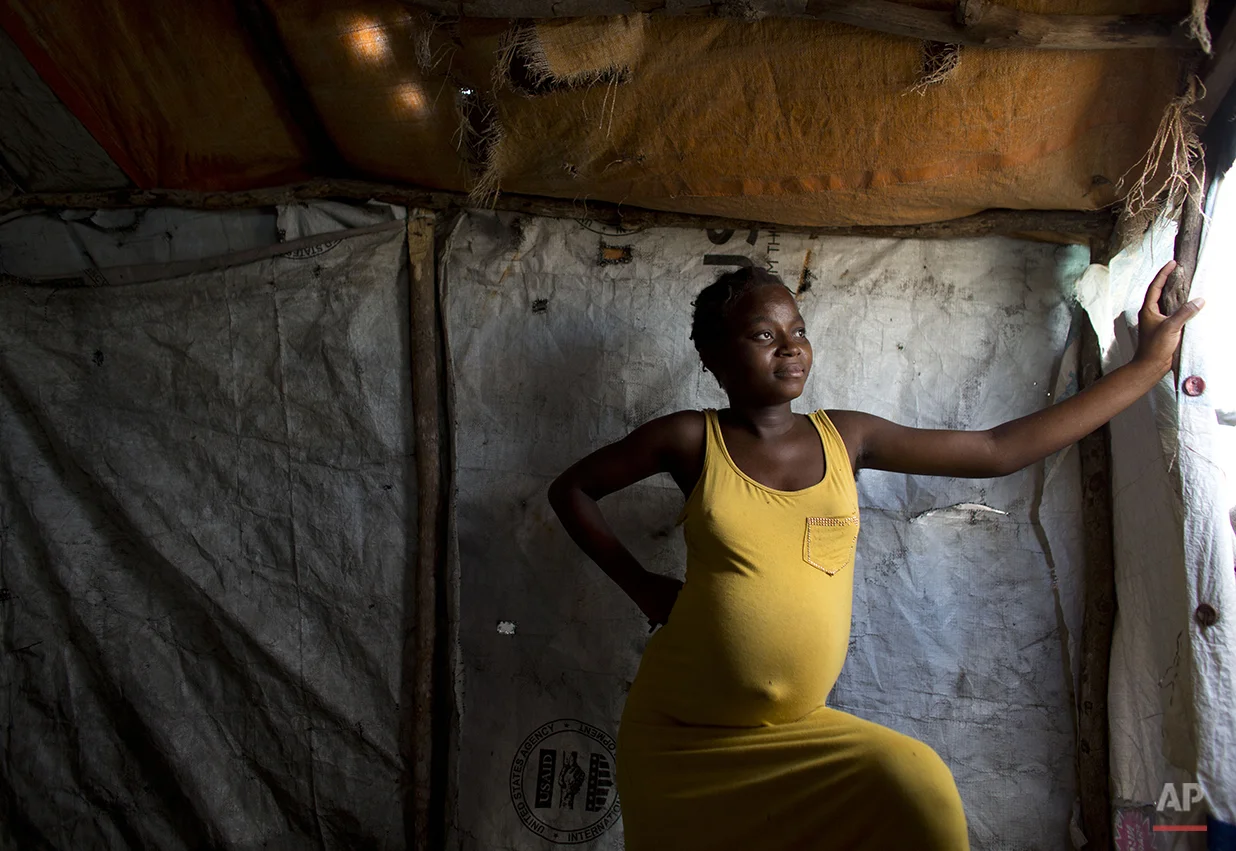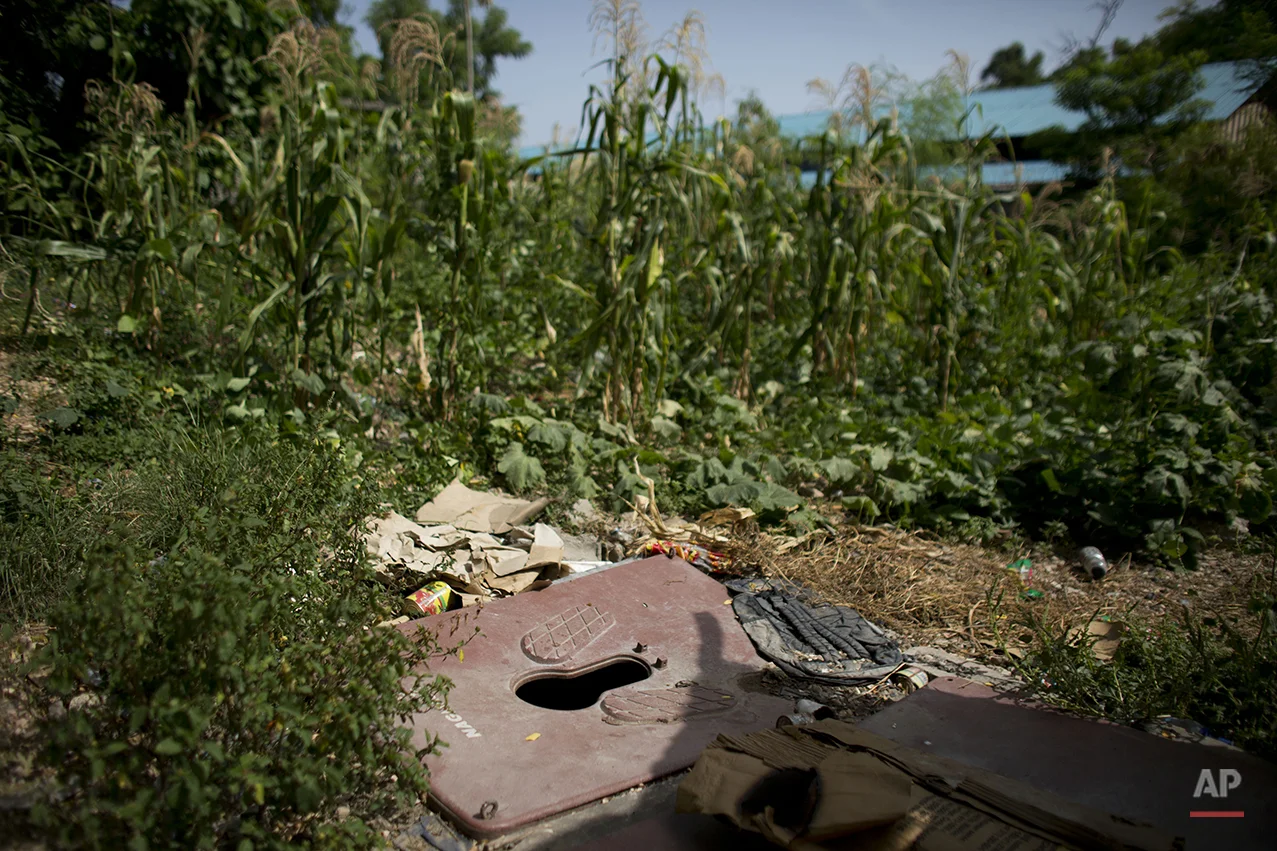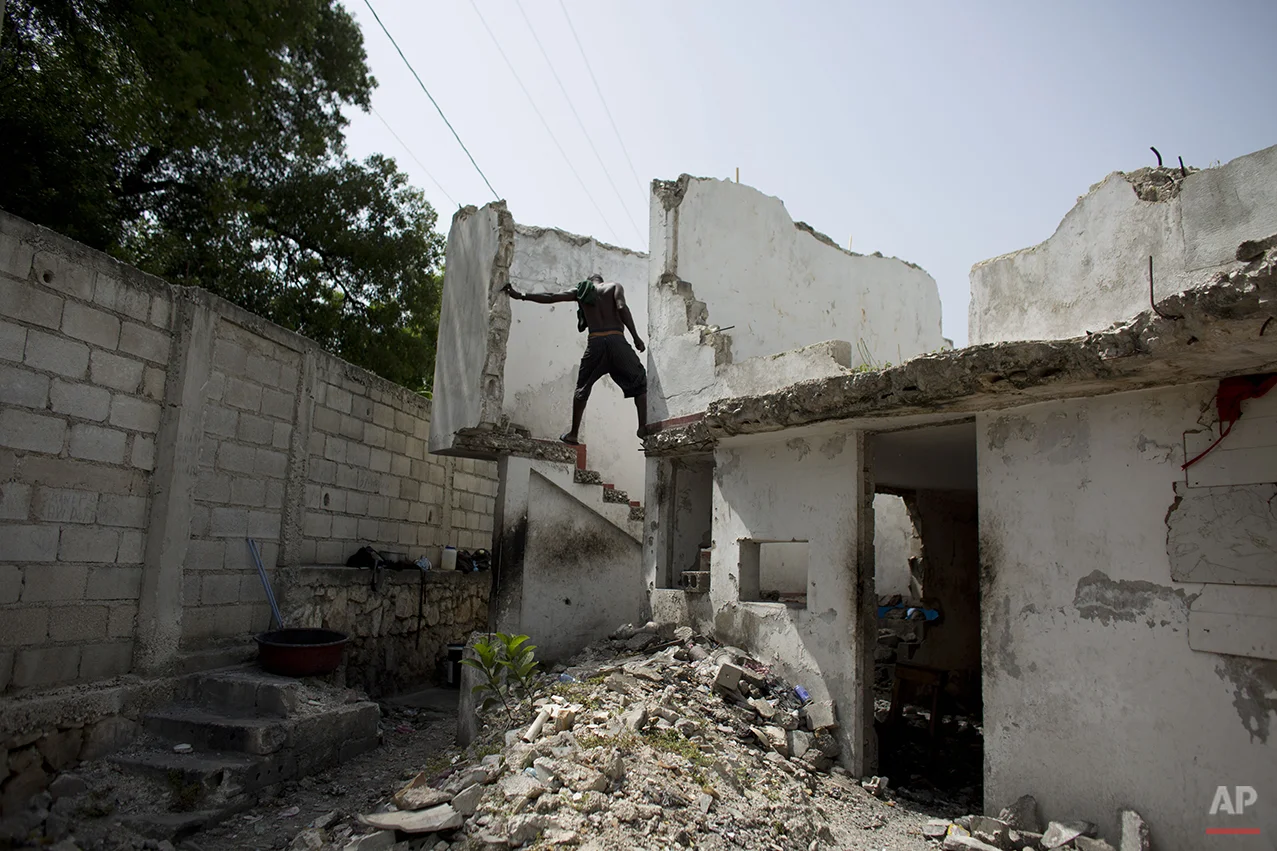Five years after quake, Haitians turn ruins to homes

Compared to some of his neighbors, Jimmy Bellefleur is not doing badly. The electrician has turned abandoned government office space into a one-room home for his wife and their two daughters.
He covered the open window with a plastic tarp and installed a simple door with a lock. It's a small bit of security for his family, who live as squatters on the upper floor of a building damaged in Haiti's 2010 earthquake.
Officials say most of the 1.5 million people homeless after the magnitude 7.0 quake that destroyed much of the capital and surrounding areas have now found shelter, with about 65,000 living in some 66 encampments, according to the International Organization of Migration.
Yet there are thousands of homeless like Bellefleur who go uncounted in abandoned buildings or hidden tent camps. Some are people who received rent subsidies from non-governmental groups that have since run out.
In downtown Port-au-Prince, there are people getting by the best they can in the ruins of a luxury hotel, under tarps and in a windowless trailer on the grounds of the destroyed national theater. Others are in buildings classified as too dangerous to enter.
The iconic Iron Market, which collapsed in the quake, was restored after the disaster. But around it stretch avenues lined with street stalls masking abandoned, crumbled buildings.
During the day, hairdressers and manicurists work inside the garbage-strewn structures, which are missing walls and, in some cases, entire facades. At night, the shells of the more intact buildings are home to people like Bellefleur and his family. Because he is an electrician, he managed to rig up electricity. But they have no water and much of the structure is exposed to the elements.
Before the quake, they lived in two rented rooms in the Carrefour-Feuilles district, near downtown. But the building was destroyed, he says, and they lived on the streets for more than a year.
"I don't like the children here. It's very open. There is no security," he says.
But he has no better alternative. "I don't have the means to leave," he says. And, he notes, "There are a lot of people who live worse than we do."
His work enables him to buy food and acquire relative luxuries such as a double bed and the used televisions and fans that he has brought back to life.
Bellefleur's neighbors in the building include an elderly carpenter, a computer hardware repairman, a man earning a pittance by recycling bottles, and several unemployed young people.
Zarmor Sendi lost her home in the quake and was later evicted from a camp. She now lives alone in a former bathroom too small to lie down in. At night, she pulls her meager bedding into one of the open front rooms to sleep.
Near the airport, six families live in the offices of a former shipping company. Johnly Clif Gaspard is there with his mother and two younger siblings.
Despite his mother's full-time job in a button factory and Gaspard's talent for making motorized toys from salvaged materials, the family can't afford to pay rent. After the quake, they lived in a tent camp until being offered a one-year rent subsidy to leave. When that ended, they were forced to scramble again and ended up in a space that had been abandoned before the quake.
Reginald Guillaume, who lives in one of the remaining camps in the capital, says he also was offered the rent subsidy, but refused.
"The government offered me 20,000 gourdes ($345), but I said no. It's not enough."
He estimates about 10 families who did take the money moved back into the ravine-side camp once the money ran out. Like other camp residents, they remain in limbo, legally not allowed to build on the land, but without the means to leave.
Text from AP news story, AP PHOTOS: 5 Years After Quake, Haitians Turn Ruins to Homes, by Rebecca Blackwell.
Follow Rebecca Blackwell
Follow AP photographers and photo editors on Twitter
Spotlight is the blog of AP Images, the world’s largest collection of historical and contemporary photos.
Written content on this site is not created by the editorial department of AP, unless otherwise noted.



























